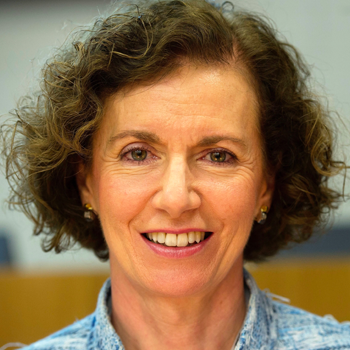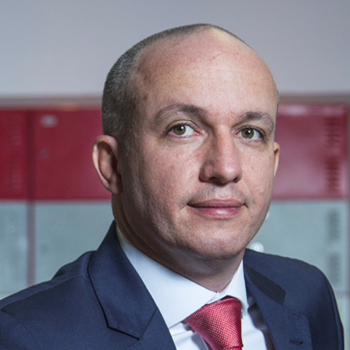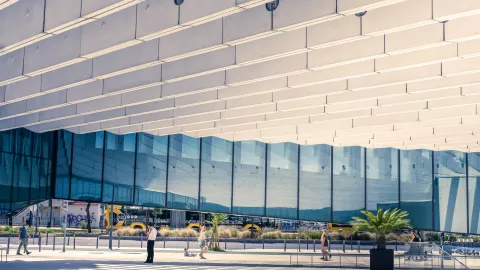Artificial intelligence, viruses, storms, extraterrestrials... All these reasons have already been used to portray the end of the world in cinemas. Not all feature films were masterpieces, but the apocalyptic setting always manages to fulfill its entertainment purpose on the big screen.
In real life, humans have been one of the main factors behind the degradation of the environment. It is no longer possible to turn your back on the issue of climate change. Outside the cinema, the cameras have shown us skeletal polar bears, fragile and degraded landscapes, people made homeless because of extreme weather events and big forest fires, among other causes.
From a gray past to a green future
Emissions of carbon dioxide (CO2) into the atmosphere are the main cause of global warming and consequent climate change. The problem is that, without carbon dioxide in the air, the planet would be cold and arid. However, excessive CO2 generates the greenhouse effect, which in turn prevents the radiated heat from being released. That's why we talk about global warming.
This increase in the temperature of the planet began to emerge rapidly at the beginning of the Industrial Revolution, in the 19th century, with the use of fossil fuels.

It is true that it was a time in history that generated great wealth and brought countless possibilities that human beings had never dreamed of. The use of coal, oil and natural gas provided the energy needed to increase the production of goods and services for the world population. Humanity liked what it saw and became "addicted" to it.
Along with this evolution came the great consequence of the increase in the concentration of CO2 in the atmosphere. As analyzed in the graphic, annual emissions went from around 250 million tonnes in 1880 to around 10 billion in 2015, which resulted in an increase in the greenhouse effect and a consequent increase in temperature.
As we reached the 21st century, the problem continued to worsen. The scientific community
Indicates that it may already be too late to prevent the increase in global temperature from exceeding pre-industrial values by 1.5ºC.
“It is necessary to realize, as an international scientific context, that we already have an average global temperature 1.1ºC above what the average temperature before the industrial era was. "Even if everything that is within reach is now done, the probability of reaching just 1.5ºC is already small, ” says Sara Goulartt, deputy director of EDP's Climate and Environment area.
The climate takes its time to re-balance itself, so it is urgent that we reduce our environmental impact on the planet. Fortunately, we already have technology for this purpose and the electricity sector is recognized as being at the base of the transformation.
The decarbonization of electricity production centers is essential and this is possible with a strong focus on renewables. Solar and wind technologies are increasingly competitive. The reduction in investment costs is a great opportunity for the continuous elimination of fossil fuels. To counteract their use, ambitious green energy production goals must be established.
Over the past 12 years, EDP has been anticipating the sector's trends and aligning its business model with the energy transition to fight the climate crisis. The technology exists and the group has been looking for urgent solutions related to decarbonization in the production of electricity, by investing in green energy. An example of this is the investment in the WindFloat project, a technology that allows the exploration of wind potential at sea, at depths greater than 40 meters. “This bet by EDP is very innovative and has great potential because it allows us to use the wind in places where until recently it was not technologically possible,” says Sara Goulartt.

“The energy transition is not a fad. EDP has been working for a long time to promote a new model of sustainable, safe, clean and cheap energy”.
Maria Yolanda Fernandez Montes, Director of Environment, Sustainability, Innovation and Quality at EDP Spain.
For decarbonisation to be possible, we must all be in the same boat. In this sense, we are witnessing a united front of the countries in order to maintain the Paris Agreement, being aware that it must be implemented with actions at a global level, but also at the local and private sector levels. To help in this process, EDP created the Save to Compete program. It is a support system for companies based very much on energy efficiency: strategic analysis of energy consumption is conducted, potential savings are identified and then the benefits are shared with the customer on this service.
Energy transition for all
Climate change affects all regions, anywhere in the world. The polar caps are melting and the sea level continues to rise. Extreme events are a reality.
According to the Global Climate Risk Index 2020, Portugal is 19th among countries most affected by extreme weather events between 1999 and 2018. Globally, there were 12,000 extreme weather events, 495,000 deaths and losses worth 3.19 billion euros. Puerto Rico, Myanmar, Haiti, Philippines and Pakistan are the countries that have suffered the most in the past 20 years.
No country can be immune from the consequences of climate change, but the least developed countries need to have large financial support to respond to the needs that arise from these events.

“There is already very little that can be done to prevent the increase in the number of extreme events. Now, we have to accelerate so that its impact will be as small as possible”.
Sara Goulartt, deputy director of EDP's Climate and Environment area.
There is an urgent need for a commitment to sustainability and the need to fight poverty and electricity exclusion, which still affects more than 840 million people. This is an opportunity to introduce renewable energies and reduce global dependence on fossil fuels. For this reason, EDP has supported numerous clean energy projects and sustainability solutions to benefit more than 200 thousand people, in less developed countries. The A2E (Access to Energy) Fund covers Nigeria, Kenya, Malawi, Mozambique and Tanzania.
"Ensuring access to energy for the most remote and needy communities, enabling the creation of sustainable ecosystems are, therefore, necessary conditions to break the cycle of poverty and contribute to the social and economic development of these regions," recalls the EDP executive president António Mexia.
https://www.edp.com/pt-pt/partilha-do-conhecimento/mobilidade-eletrica-a-caminho-do-futuro
There is no planet B, but there are plans B
According to the United Nations, 68% of the world's population will be urban in 2050. Now imagine, in the future, a cosmopolitan city with even more people, more cars, more transport, more bicycles. For several years, cinema has been “asking” what our cities will look like in the future and, sometimes, the scenarios are not very optimistic. Great skyscrapers, elevated highways, chaotic and disorganized spaces. It is up to us to adapt a different scenario to reality and to develop smart and sustainable cities for future generations.
For Maria Yolanda Fernandez Montes "we can imagine these cities with the use of renewable energy, an increase in urban green areas, intelligent use of natural resources and sustainable mobility".
The decarbonisation of transport is also a major concern of the scientific community, as it currently represents around 24% of global CO2 emissions. According to the European Environment Agency, transport consumes a third of all energy in the EU. Contrary to other sectors, such as the production of electric energy that is on the right track to reducing emissions, transport continues to increase them. “Cars, vans, trucks and buses produce more than 70% of global emissions of greenhouse gases originated from transport. The rest comes mainly from shipping and aviation. ”
That is why a good bet on the electric mobility plan is necessary. The strategy presented by EDP has undergone a major investment in public charging stations in Portugal, Spain and Brazil.
In the brother country (Brazil), EDP implemented a new 430 km corridor on the Presidente Dutra Highway, which connects Rio de Janeiro to São Paulo, with six new fast charging stations for electric vehicles. The project, developed in partnership with the BMW Group Brazil, had a total investment of around 217 million euros. The Rio de Janeiro -- São Paulo corridor allows for a complete electric vehicle trip between the two most populous capitals in the country.

"We want to expand, in the coming years, the ultra fast charging stations for electric cars on all the main roads in the State of São Paulo.”.
Dominic Schaml, Executive Sustainability Manager at EDP Brasil
The International Energy Agency estimates that 130 million electric vehicles will exist in the world in 2030, a number that will help achieve the goal set in Paris at the Conference of Parties (COP 21) in December 2015: to keep the global average temperature increase below 2ºC.
Together for a better world
It is necessary to rewrite the script about the future of the planet. Science fiction has long shown us what to expect from an apocalyptic scenario, but the truth is that no one is prepared for the consequences in real life. We are in a race against time and we should all be aware of our role in this global effort.
The individual role of citizens may seem more secondary, but it is just as important. To contribute to the reduction of greenhouse gas emissions, we can start with small steps such as: saving on light at home, insulating windows or installing double glazing, opting for solar panels, as well as walking, cycling or using public transportation, leaving the car in the background.
EDP also has ambitious goals, but they are not impossible to achieve. The company has been distinguished in recent years for its commitment and in 2019 was a world leader in fighting climate change. Besides, its CO2 reduction strategy for 2030 was also recognized by the Science Based Target initiative, which shows that the company's commitment, in what is within its reach, will enable it to achieve the Paris goals.
António Martins da Costa, EDP administrator, clarifies that “in a world undergoing profound transformation, in 2020 the group will have exceeded 78% of renewable installed capacity and in 2030 reduced specific CO2 emissions by 90% compared with 2015”.
In order to achieve this, EDP defined a set of goals until 2030. On the one hand, it will continue to invest in renewable production technologies, giving priority to wind and solar energy:

On the other hand, it will encourage the consumption and production of clean electricity, as well as promoting energy efficiency:

What will the future look like?
It must be realized that limiting global warming to 1.5ºC will require a rapid and profound decarbonization of the world's economy. The necessary transformation offers a great opportunity for the green economy, but it also brings social and economic challenges to the communities. The European Union has been bringing these concerns to the table, analyzing the negative and positive effects of decarbonization policies.
“There is a line of work, called Fair Transition, which essentially seeks to understand who is penalized along the way and what kind of mechanisms can be created to socially support this transition,” explains Sara Goulartt. In this way, the EU tries to ensure a transition to renewable energy that is more just and equitable for the companies and populations involved.
It is true that a dark scenery has been drawn about the effect of climate change and the scientific community has shared several spoilers about the next chapters. Even so, we are witnessing an increase in global awareness regarding the health of the planet and of humanity itself. The periods of change are worrying, but we should not wait for the "film" credits to know what the future holds for us.
